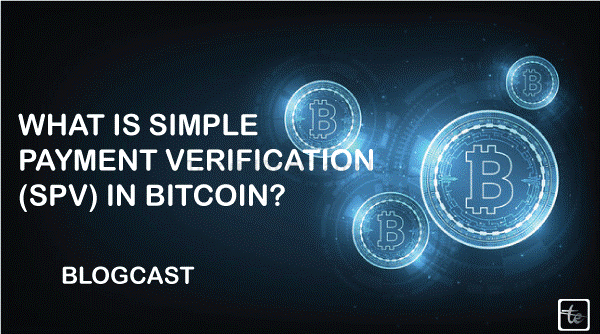Full vs Simple Payment Verification in Blockchain
This tutorial mainly discusses about different approaches to payment verification. Let's begin by introducing the fundamental terms that will ultimately be used throughout this essay.

1. Authentication: Systems that verify users' utilization of resources on the foundational technology of Bitcoins and other digital currencies are referred to as systems for identification.
2. Authorization: A transaction needs permission from the user before it can be included in a chain and appended to a block.
3. Proof of Work (PoW): The first consensus system in the blockchain network is PoW. It adds the block to the series of transactions and validates the purchase. The generation of proof of work may involve a random, low-probability process. A significant amount of experimentation and error is required in this process before an appropriate proof work can be produced. A mathematical puzzle that can swiftly show a thing exists is the fundamental tenet of proof of work.
In order to maintain security, prevent fraud, and foster trust, proof of work is necessary. Due to transaction security, independent data machines or miners are unable to provide false information about it. A method called proof of work is used to safeguard the past transactions of Bitcoin and gradually increase the difficulty of altering the data.
4. Proof of Stake (PoS): The Proof of Stake principle states that a person's capacity to mine or approve block events is based on the number of coins they possess. This implies that a miner's mining power increases with the number of coins they own. Nodes or miners need to solve an evidence of work problem, which is a computational challenge, in order to complete the verification step.
Simple Payment Verification
A lightweight client can use Simple Payment Verification (SPV) to determine whether the transaction is on the Bitcoin blockchain without downloading the complete blockchain. To confirm that the transaction is part of a block, an SPV user asks for a Merkle branch as proof of inclusion. SPV client safety is superior to that of web wallet security.

Key Features:
- Finding the longest network without turning into a miner is easy and doable.
- By connecting the transaction to a link in the chain, the user can halt it even though he is unable to verify the transaction for himself.
- As a result, the verification is trustworthy while honest nodes maintain control over the network, but it becomes vulnerable if an attacker does so.
- Even though network nodes can independently verify transactions, an attacker's fake transactions can fool the simplified approach for as long as the attacker is able to maintain network dominance.
- One method to guard against this is accepting alerts from network nodes when they identify an invalid block. To verify the discrepancy, the user's programme must download the full block and alert transactions.
Full Payment Verification
Wallets, sometimes referred to as thick or weighty wallets, require full copies of the distributed ledger to verify payments. They can verify that the bitcoin utilized in a transaction came from a mined block by tracing the history of the bitcoin backward, transaction by transaction.
Key Features:
Because wallet software often handles customer transactions as well as verify and relay those of other users, it is an active participant in the Bitcoin network. (In these cases, computers running these kinds of applications are called full nodes.)
All full nodes mine bitcoins, which requires an entire copy of the blockchain.
By the time the blockchain turned ten, it might have grown to be a hundred times larger. In its fifth year, it contained 35 million transactions and weighed in at over 15GB.
To obtain the blockchain, one must establish connections with other complete nodes and ascertain which blockchain—which is presumed to be the unanimous blockchain—has the largest proof-of-work total.